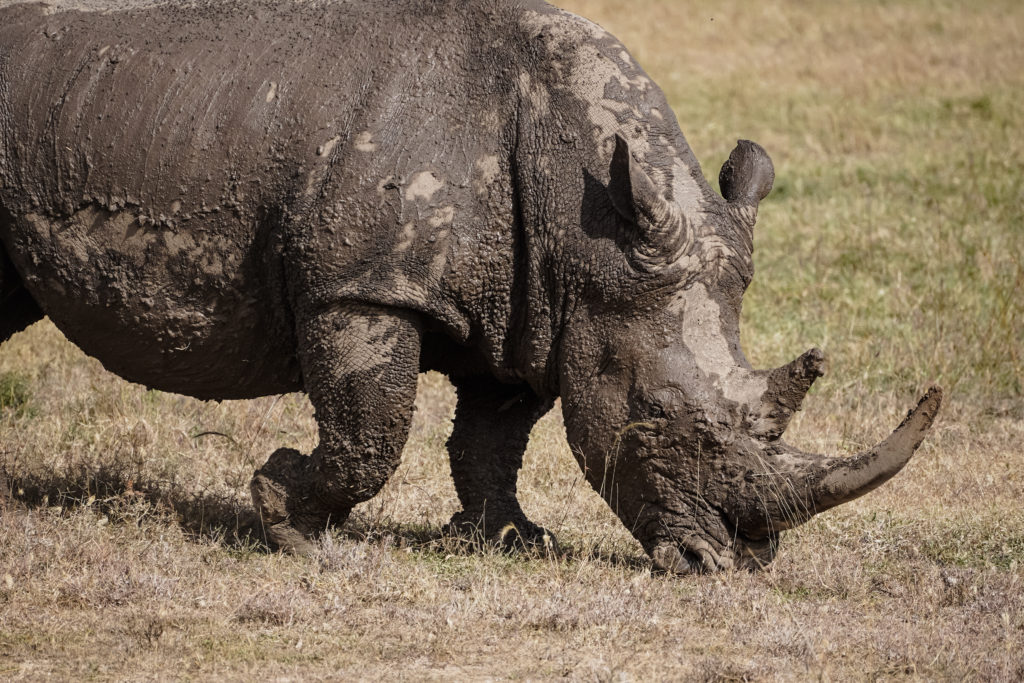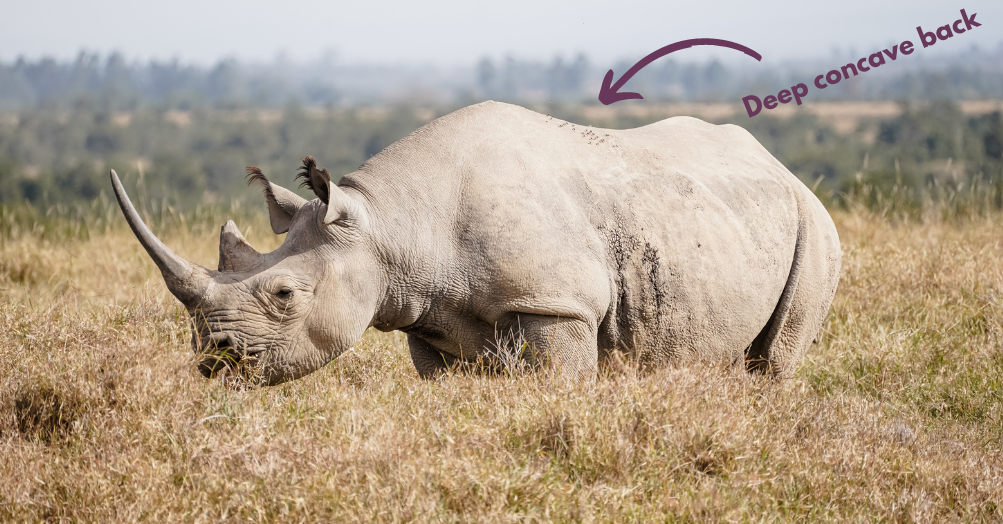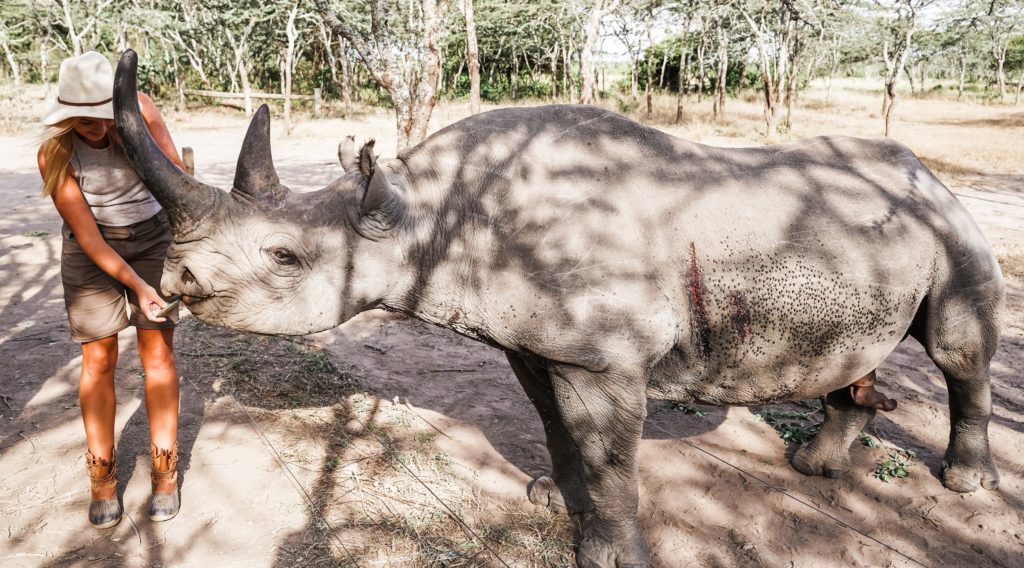
Rhinos are fascinating creatures that have made it on most people’s bucket lists. But despite their popularity, there’s still a lot of confusion surrounding the species. For instance, the rhinoceros belongs to the taxa order Perissodactyla (odd-toed ungulates), which means they have more in common with Zebras and Horses than hippos and elephants.
Across the globe, there are five Rhinoceros species; Javan, Greater One-Horned Rhino, Sumatran, and the Black and White Rhino. The first three are native to Asia, while the last two grace the savannah plains of Africa.
Now, you’re trying to recall if you’ve ever seen pictures or videos of a ‘black’ or ‘white’ colored rhino. We understand the confusion, but their names have nothing to do with their color. In fact, African rhinos are steely gray.
It’s believed the ‘white’ came due to a mistranslation of ‘weird’ from Afrikaans. Natives thought the white rhino was weird because of its wide lip compared to the black rhino’s hooked lip.
Aside from the shape of their lips, there are other notable differences that can help you tell them apart on your next safari.
Physical differences
The black and white rhinos have physical differences as a result of adapting to their diet and habitat.
Size
Generally, white rhinos are larger than black rhinos. They have long, barrel-shaped bodies, while black rhinos are shorter and more compact. An adult female white rhino weighs about 1,700 kgs, and a male weighs about 2,300 kgs. On the other hand, black rhinos weigh between 800 and 1,400 kgs. As for height, white rhinos grow to between 5 and 6 ft shoulder height, while black rhinos are between 4.5 and 5.5 ft.
Note: The white rhino is the second largest land animal after the African elephant.
Mouth shape

The difference in mouth shape is because of their diet preferences. White rhinos are grazers, so broader and flatter lips (like a cow’s) serve them better. This mouth shape works like a powerful lawnmower to grip and tear grass.
Black rhinos, on the other hand, feed on branches and leaves. Their hooked lip shape allows them to grasp and pick fruit from trees.
Face size and shape
Black rhinos have a smaller, protruding head with a shorter forehead measured from the forehead to the mouth. On the flip side, the white rhino has a longer forehead and skull. Since black rhinos feed on leaves and fruits on trees, they carry their heads high, while white rhinos keep their heads low for grazing.
Ears
Nature is always thorough, and with the white rhino, it didn’t leave anything to chance. You see, the white rhino always has its head down to graze and has poor vision leaving it vulnerable to predators. To compensate for this, it has long tubular ears that pick-up sounds in its environment.
Black rhinos have smaller, rounded ears since they hold their head high and have good eye-sight, so they don’t depend on sound alone.
Horn
Both rhino species have two horns. However, they differ in size. In white rhinos, the front horn is longer than the second horn. Black rhinos generally have shorter horns. At first glance, black rhino horns may appear to be the same length, but the front is always slightly longer.
Note: Male black rhinos have thicker horns, while females have thinner, longer horns.
Back

When observing the two rhinos from a distance, the above physical traits can be difficult to make out. The best way to tell them apart is by the shape of their back. Black rhinos have deep concave backs, while white rhinos have relatively flat backs with a prominent hump behind the midway.
Habitat and behavior
Generally, white and black rhinos share habitats. However, white rhinos prefer fields and grasslands, while black rhinos love dense bushes. These preferences are guided by their diet.
As for behavior, black rhinos tend to be more territorial and aggressive than white rhinos. This is probably because black rhinos have to deal with more predators springing up from behind bushes, while white rhinos have more time to react to threats in the fields.
Sociability
White rhinos are more sociable and are often in large groups (7 or more), while black rhinos often live alone. Occasionally, they can be spotted in groups of five, but that’s rare.
Mother calf relationship
Black rhinos have their calves walk behind them, while white rhino calves walk in front of their mothers. This is important because white rhinos have poor vision and keep their head low. At the front, it’s easier for mothers to protect the calves.
Where can you see them?

Sadly, these animals have become endangered over the years due to poaching. As such, they are a little difficult to spot on safaris.
It’s estimated about 3,000 and 15,000 black and white rhinos, respectively, are left. The black rhinos are scattered in areas in South Africa, Botswana, Namibia, Zambia, Zimbabwe, Tanzania, and Kenya.
White rhinos are found in large concentrations in Uganda and South Africa. They are also present in Namibia, Zambia, Zimbabwe, Botswana, and Kenya.
Note: Kenya is home to the last two female Northern White rhinos. They are a sight to behold, and we can plan a safari to experience them and appreciate their beauty.
Now that you know their differences, you can comfortably distinguish them when on safari. Capture Kenya can plan a safari to destinations you’re guaranteed to interact with these magnificent beasts.
Contact us today for a consult and to plan your next safari to Kenya.
